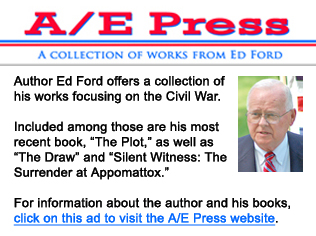|
Civil War’s deadly firepower included
variety of pistols, rifles, field artillery
From handguns to field artillery, the Civil War had its share of deadly weapons.
Named after Napoleon III of France, the Napoleon Light Field Gun was a muzzle-loaded smoothbore cannon that fired a twelve-pound round. A mature design with design roots in French artillery, it was considered safe and reliable, its physical size a good compromise between mobility and killing power.
The Napoleon was used by both sides during the war. It could fire solid metal shot, explosive shells, and grape and canister rounds. The barrel was 66 inches long and had a bore diameter of some four and half inches – about the same as the main gun on an Abrams tank. The entire gun and two-wheel mount weighed 2,350 pounds.
The Model 1857 had a range of 1,619 yards. It could fire up to four shotgun-like canister shots per minute, making it deadly against massed infantry at short ranges.
The top-five list of deadly weapons also included the Springfield Model 1861 rifle, the Henry repeating rifle, the LeMat pistol and the Gatling Gun.
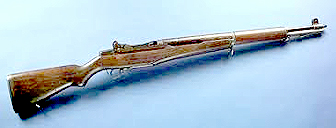 The standard infantry weapon of a largely infantry war, the Springfield 1861 was likely responsible for the lion’s share of combat deaths. Roughly a million Springfields were built, arming the foot soldiers of both sides. The standard infantry weapon of a largely infantry war, the Springfield 1861 was likely responsible for the lion’s share of combat deaths. Roughly a million Springfields were built, arming the foot soldiers of both sides.
The Springfield was a .58 caliber rifle with a 40-inch barrel. It was loaded through the muzzle and, when triggered, a percussion cap was struck and detonated the black powder charge. Because of the relative inaccuracy of the weapon and the lack of marksmanship training for individual soldiers, the rifle usually was used in massed fire tactics, which depended upon large numbers of soldiers firing simultaneously to saturate a target area.
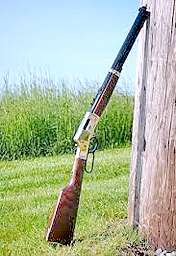 The assault weapon of its time, the Henry Repeater was the fastest-firing weapon an infantryman could carry. Unlike the Springfield 1861, which was limited to two-four shots per minute, the Henry could empty its magazine of 16 shots in less than a minute’s time. The result was a single man with the firepower of an entire squad of riflemen. The assault weapon of its time, the Henry Repeater was the fastest-firing weapon an infantryman could carry. Unlike the Springfield 1861, which was limited to two-four shots per minute, the Henry could empty its magazine of 16 shots in less than a minute’s time. The result was a single man with the firepower of an entire squad of riflemen.
The Henry’s deadly nature lay in its innovative new design. Unlike the Springfield – which used separate black powder, a percussion cap and bullets – the Henry combined all three in a single .44 caliber metallic cylinder, what would be considered the modern ammunition cartridge of today. The Henry incorporated a lever-action loading system to lower the bullets into the breech and had a tubular magazine that ran parallel to the barrel that held 16 rounds.
Henry rifles were carried by Sioux and Cheyenne warriors at the Battle of the Little Bighorn, where they annihilated Col. George Armstrong Custer’s 7th Cavalry Regiment. The rifle design later was picked up by Winchester and evolved into its lever-action rifle series, including the Model 1873, known as “The Gun That Won the West.”
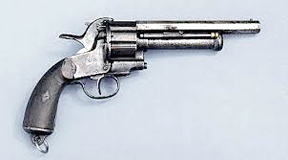 An unusual pistol design, the LeMat was designed by Jean Alexandre LeMat of New Orleans. The pistol saw action with the Confederate Army and Navy and theoretically was the most lethal handgun of the American Civil War. An unusual pistol design, the LeMat was designed by Jean Alexandre LeMat of New Orleans. The pistol saw action with the Confederate Army and Navy and theoretically was the most lethal handgun of the American Civil War.
The LeMat was a nine-cylinder .42 caliber revolver. Nine cylinders meant it could hold 50 percent more rounds than a typical revolver. The gun was actually two guns in one, because it had a second, larger, single-shot barrel capable of firing shotgun rounds. A selector switch on the side of the gun allowed the operator to switch back and forth between handgun and shotgun modes.
The LeMat was unwieldy, with the two firing mechanisms making it unusually weighty for a handgun. The weight of the cylinder made it rear-heavy, which likely helped aiming.
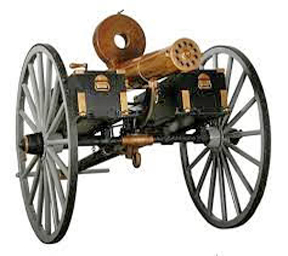 The predecessor of modern day multi-barreled machine guns and cannon, the Gatling Gun was invented in 1861 by Dr. Richard Gatling, a physician living in Indiana. Gatling allegedly created the gun under the naive assumption that making a single man – the Gatling Gun operator – so lethal, that it might cause wars to become obsolete. The gun saw very limited service in the Civil War, but was very effective. The predecessor of modern day multi-barreled machine guns and cannon, the Gatling Gun was invented in 1861 by Dr. Richard Gatling, a physician living in Indiana. Gatling allegedly created the gun under the naive assumption that making a single man – the Gatling Gun operator – so lethal, that it might cause wars to become obsolete. The gun saw very limited service in the Civil War, but was very effective.
|
